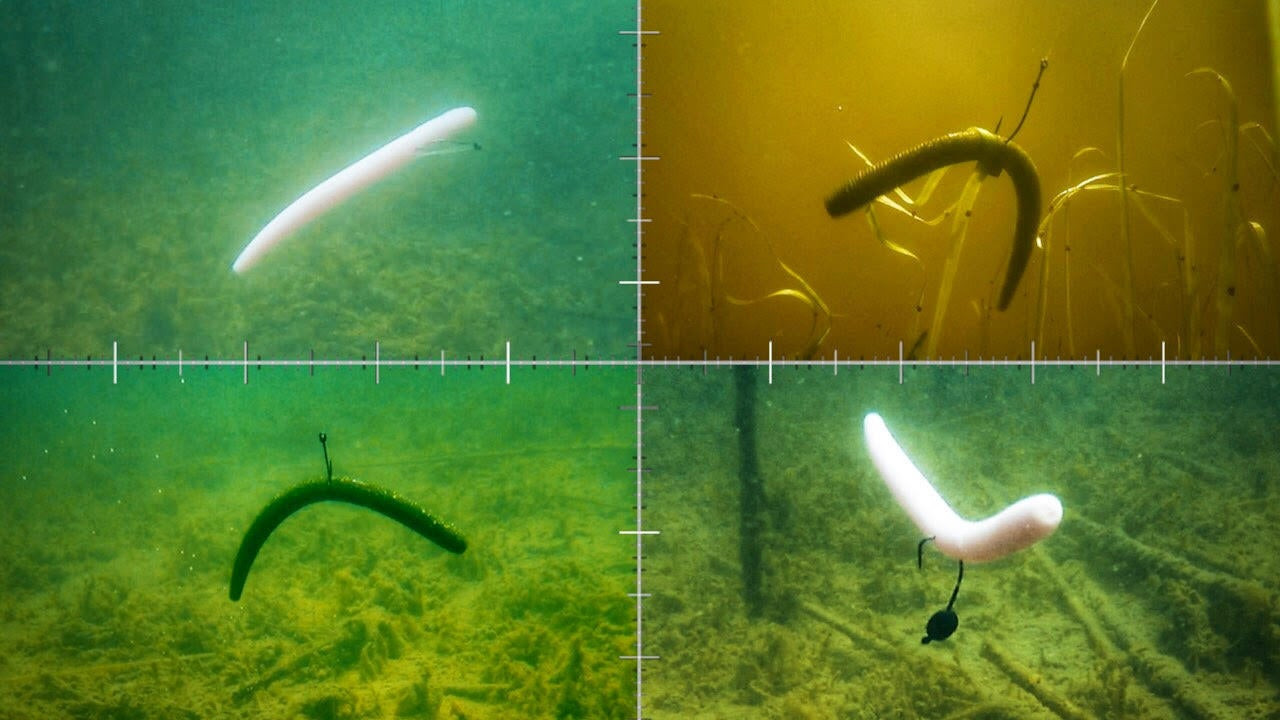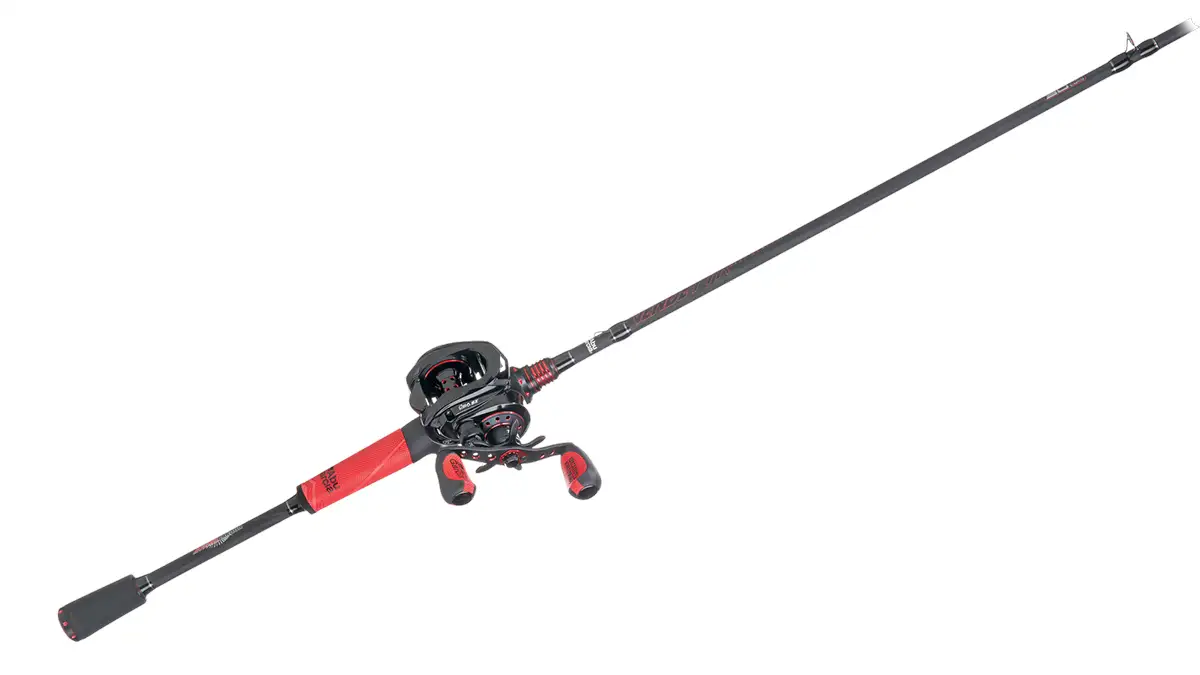The wacky rig is certainly not new but in continuing our series “What it Looks Like” on understanding why some baits and techniques are so effective by studying how they look and sound underwater, we thought we’d show people the various ways anglers often fish a wacky rig to maybe understand why it works so well and why you should include this type of rigging in your bass fishing.
TACKLE USED:
- X Zone Lures Pro Series True Center Stick
- Mustad Elite Series Wacky Head
- VMC Weedless Neko Hook
- VMC Tungsten Drop Shot Ball Weight
- VMC Wacky Rings
We stuck with four primary uses of a wacky rig:
- Weightless wacky rig
- Center-weighted wacky rig
- Jighead wacky
- Wacky rig on a drop shot
We purposely left off Neko rigging because while the bait is rigged liked a wacky rig, the position of the weight in the nose makes it act very different then any of the traditional wacky rigs.
Weightless wacky rig
The weightless wacky rig is the most common use of a wacky rig. You can put an o-ring around a plastic, or just belly hook your favorite stick bait and skip and pitch it around. It falls horizontally with the ends flapping as it falls.
But Shin Fukae pointed out to me many years ago that a wacky rig really behaves more like a crawfish than a worm. When you pulse or pop the rod, the bait folds or closes and darts forward and then when you stop it opens back up straight and falls weightlessly through the water just like a crawfish would. They scoot and dart and the fall like a feather.
That’s its appeal. You cast it and let it fall on slack or semi-slack line to get maximum action. Then once it’s on bottom you can pop it up with a series of pops of the rod to get it looking like its darting away to give yourself another fall presentation. I fish it a lot around shallow docks and cover this way so I maximize its potential.
Center-weighted wacky rig
Similarly, a center-weighted wacky does the same thing as a weightless wacky. But it falls faster, it pulls on the bait more so it causes the bait to pulse and flap a bit more strongly. You do this to fish it in deeper water or around deeper targets like say bridge or dock pilings or brush piles.
Jighead wacky rig
The jighead wacky gives you an effective means for fishing it like a weightless wacky but then also working it more like a crawfish. It has also been dubbed flick shaking. With the jighead you can pop the bait along and let it fall and repeat the process all the way back to the boat. The head on the jighead will also pendulum around giving the bait another more slight variation to the original weightless wacky.
Drop shot wacky rig
A traditional drop shot works well on pressured fish like you often have in clear water. But wacky rigging can also give the worm a bit more action and you can lift and let it fall by just tightening up your line and then feeding it slack while leaving the weight in one place. This is very effective for fishing around bedding bass as well as fishing out deep around isolated cover like stumps, boulders and other objects where you want the drop shot moving a lot but staying in one location for as long as possible.












